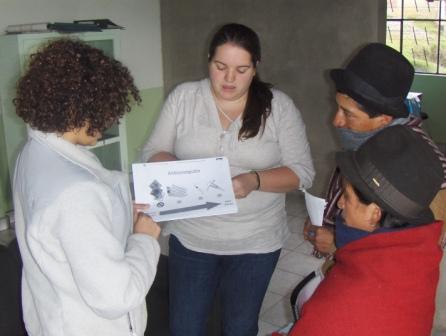Backpack Progress
Throughout our visits to Yatzaputzan and Planchaloma, we have made slow but steady progress on developing both the Community Health Outreach and OB/GYN backpacks.
CHO Pack
We quickly learned that the CHO pack, originally designed for community outreach workers in Malawi, would be used by the promotores de salud at Fundación Futuro’s health centers in Ecuador. We have talked extensively with Marta from Planchaloma and Angel and Evita from Yatzaputzan about ways to improve the backpacks, and have learned that while they have the medical training to use all the supplies currently provided, their focus is more on health education in the communities surrounding the clinic. As such, we have designed a series of educational flipbooks (hygiene, oral health, nutrition, family planning, vaccinations and recycling) to put in the backpack that they can use with individual patients or during larger brigades. We’ve also included a dry erase board and markers that they can use to improvise additional lessons. They also requested additional medical supplies, including an adult scale, masks, suture kits, a WHO Colour Scale, a sharps container and a pediatric blood pressure cuff, some of which we have been able to find in Quito. We also need to find new containers for urine samples, since they only use sterile cups here. We hope that once we finalize these changes we will be able to take the CHO pack on another brigade to assess the impact of these improvements.

Reviewing our new educational materials with Angel and Evita before printing the final copies.
OB/GYN Pack
This issue of sterility has posed several major challenges for the implementation of the OB/GYN backpack. Patients here will not use speculums that have been used on other women, even if they’ve been properly sterilized. Instead, they use disposable speculums. Furthermore, the obstetricians use individually-packaged spatulas and brushes in order to keep them sterile, whereas those in the backpack are contained in one large bag. Until these changes are made, we are unable to use the backpack in the field. In the meantime, we have translated the backpack’s educational materials into Spanish, and have discussed the frequency of use of each of the backpack’s procedures. While pap smears and birth control counseling are common, the doctors at the clinic do not perform biopsies, but rather refer patients to a larger hospital.
We are eager to finalize these modifications so that we can bring the new and improved versions into the field for use with patients.
